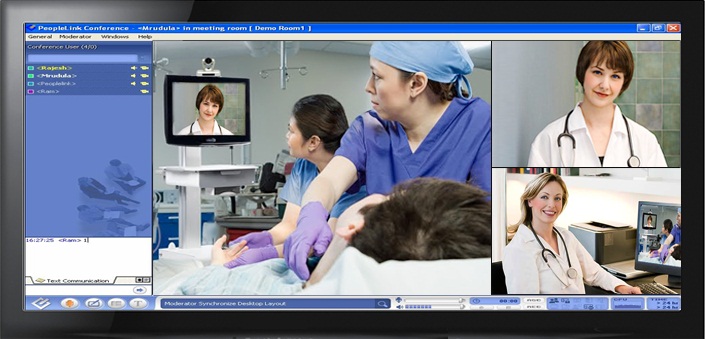Top 10 Ways Healthcare Facilities Are Using Video Conferencing
Video conferencing is becoming popular these days, as it is easy to use, reliable and affordable for all types of businesses now. The cutting edge technology makes it more powerful and the easiest way for high definition communications. Business, Enterprises, Non-Profitable Organization, Educational Institutions, Hospitality and Healthcare Industries are using the new video communication technology for making fast decisions, saving business expenses and in getting productive results.
1. Boundary Less Healthcare via Telemedicine Video Conferencing - video conference solutions enable Doctors and Healthcare companies to offer a low-cost, high-impact way to deliver rapid knowledge to physicians, either to save lives or to gain additional medical training, sales and research. Healthcare Facilities Are Using Video Conference To Improve Patient Outcomes, Increase Revenues, & Reduce Expense.
2. Remote Patient Monitoring – for locations with limited access to specialized doctors, campuses can connect to share resources and offer healthcare programs to all patients across distant locations and even remote villages. Physicians from large teaching hospitals or medical centers can connect with their remote patients, via video communication for the purpose of rendering a diagnosis and subsequent treatment plan.
Video Conferencing Software enables the patient to see a specialist during a remote consultation accomplished in real-time, or the transmission of images, such as x-rays, along with patient data for later viewing. This is especially important for patients living in rural areas, or who are too ill to travel great distances to visit a specialist or clinic. The specialist can easily control the distant patient side camera, share their PC content, and access browser-based applications like EMR/EHR, PACS, and lab reports. Physicians can provide their expertise even from home and provide accurate examinations.
3. Patient education - Through video conferencing, the patients with chronic conditions can have their questions answered and be given more extensive medical knowledge via our interactive technology. These patients can be provided with a specialist opinion from a large medical center, or suggested a telehealth solution to explore other treatment options.
4. Extend Medical Education and Training to unreachable locations - Healthcare Video Conferencing enables medical teaching staff to demonstrate techniques and skills to medical students or to doctors renewing their medical license, continuing medical education for health professionals and special medical education seminars for individuals and groups in remote locations.

Healthcare professionals can use their PCs for high definition video calls with colleagues from anywhere. The physician or practitioner can easily control the far-end camera, do Pan-tilt-zoom on camera for a complete view and share content live over video file sharing.
5. Attend video CME events from your home office or desktop
6. Conduct video grand rounds sharing PC content, live patient encounters, or recorded procedures
7. Video connect to nursing schools for up to date training and medical information
8. Effective Administration across all branches - Conduct administrative training and medical education using live or streaming video.
9. Advanced knowledge sharing practices - Physicians who practice out of large medical centers use video conferencing solutions to share healthcare information with physicians working in other areas of the country. For example, Dr A Reddy, in Hyderabad give lectures on cardiology, oncology, and diabetes to physicians around the world, from his home setup.
10. Pharmaceutical Sales & Training - Pharmaceutical companies typically hold between 3 and 4 meetings for field personnel per year to update sales and marketing strategies, bring new products to market, re-certify personnel on compliance and regulatory practices, and potentially to roll-out new hardware or software for sales force productivity. With medium and larger companies, this can mean hundreds, even thousands of employees at a single meeting.
It is not difficult to imagine the costs of travel, lodging, and training facilities for meetings of this size. Also, the amount of time lost in transit to and from the meeting can be anywhere from a few hours to an entire day. In a case study performed to compare various video conference solutions to in-person meetings, the online alternatives realized a 66-95% savings over face-to-face meetings Pharmaceutical companies could realize tremendous savings implementing web conferencing solutions in place of even a portion of their face-to-face meetings.